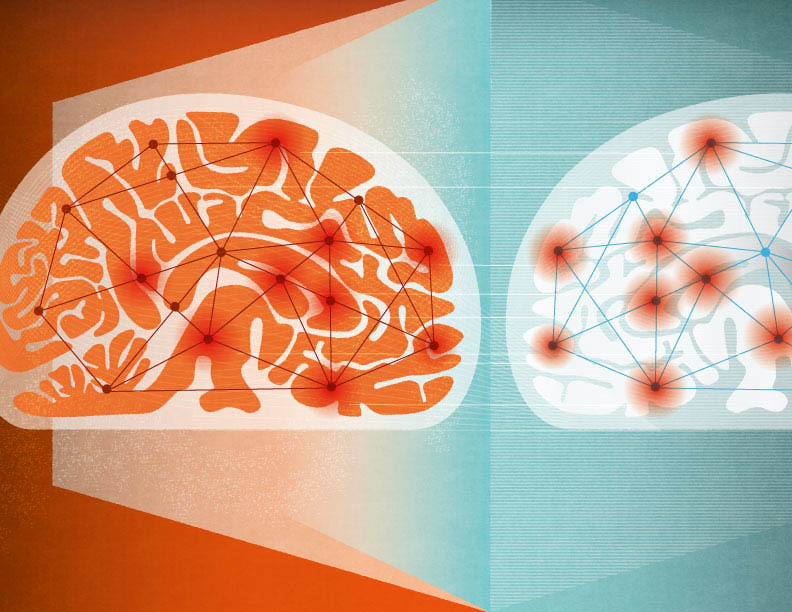Mirroring aggression
Watching counterparts brawl fires fighting neurons in mice

In nature, two animals fighting are seldom without an audience. Stanford Medicine researchers wondered how animals watching from the sidelines perceive aggressive interactions.
“Aggression is usually not only to defeat the other animal but also to tell others in the vicinity, ‘Hey, I’m the boss.’ It’s a public display,” said Nirao Shah, PhD, a professor of psychiatry and behavioral sciences and senior author of a study published in February 2023 in Cell.
Shah’s team recorded brain activity in two male mice fighting and in another observing the fight through a transparent divider. (Simply placing one male mouse into another’s cage will trigger territorial aggression.) They found a nearly identical set of neurons in the “rage center” of the brain that fire in fighters and in observers during a brawl — making them the first mirror neurons discovered in mice.
Finding mirror neurons in mice was “pretty shocking,” Shah said. Most research on such neurons has focused on primates, in the cortex, the most evolutionarily advanced part of the brain, which controls processes such as thinking, reasoning and memory. But in mice, they were in the hypothalamus, which regulates basic bodily functions like temperature and appetite — hinting at a more primal origin for mirror neurons than previously thought.
Next, the team showed that these mirror neurons not only responded to behavior but also controlled it.
When researchers inhibited these neurons, the mice became less confrontational. When they activated these neurons, the mice became indiscriminately hostile.
The fact that aggression-mirroring neurons exist in such a primitive part of the brain indicates they may have been conserved across evolution, from mouse to human, Shah said.
“It suggests that we might have the same neurons, and maybe they encode some qualities of aggression in ourselves,” he said.
Read more here.

